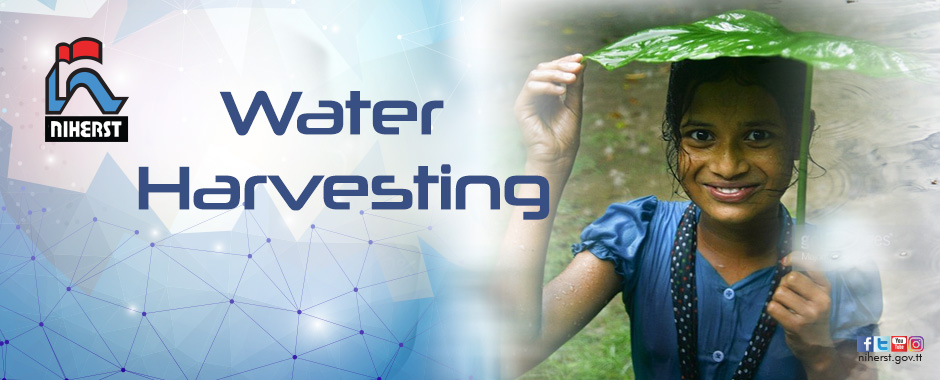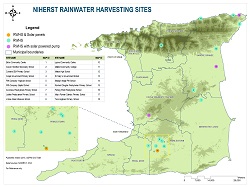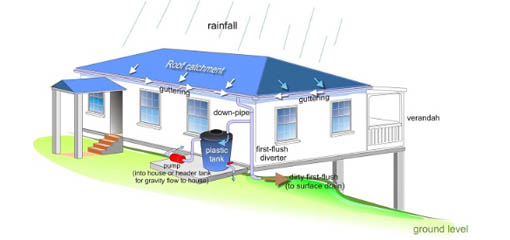
NIHERST’s programmes and initiatives, though centrally focused on science advancement, also seeks to develop sustainable solutions to societal pain points by leverage innovative technologies. Our Rainwater Harvesting Project is but one of our environmental projects to address water scarcity in a sustainable way.
The harvesting of rainwater simply involves the collection of water from surfaces on which rain falls, and subsequently storing this water for later use. Normally water is collected from the roofs of buildings and stored in rainwater tanks or underground cisterns.
Background
In 2011, NIHERST Collaborated with two key organisations:
- - The Global Water Partnership-Caribbean (GWP-C); and
- - The Toco Foundation
The focus was to promote rainwater harvesting systems (RWHS) solutions in water scarce rural communities. GWP-C together with the Caribbean Council for Science and Technology (CCST) and the Caribbean Environmental Health Institute (CEHI) created a rainwater harvesting model which would later be adopted by any community.
These models would be:
- - easy to assemble;
- - made from locally available materials;
- - simple to maintain; and
- - low cost.
SUCCESS!!
To date, sixteen (16) schools and four (4) community centres across Trinidad have been equipped with RWHS installed by NIHERST.
BENEFITS in Trinidad & Tobago
- Perfect for water shortages, particularly in the dry season.
- Decrease in the amount of down-time created by the closure of school due to the lack of water.
- Ability to flush toilets and wash hands thus improving on school sanitation and eliminating the offensive odour of unflushed toilets.
- If the schools and community centres which have RWHS are put into service as emergency shelters, the solar systems and RWHS will ensure that these shelters have a supply of water, which is a necessity.
- As climate change exacerbates the intensity of natural disasters such as drought and flooding, these systems represent cost effective practical steps that small island nations like Trinidad and Tobago can take towards adaptation.
Knowledge is POWER
Empowering Young People
Public education programmes are a key component of this project. Public education was conducted at all schools to teach students about the importance of water conservation and to help them better understand why the rainwater harvesters were being installed at their schools. It was also done to help students appreciate having the Rainwater Harvesting Systems. Over 3500 students benefited from this awareness programme.
It takes a Village: Job Creating and Innovation
The initiative has also helped contribute to skills development and entrepreneurship. In each community, a cadre of 10-25 persons was trained to install and maintain the Rainwater Harvesting Systems. Trainees attended entrepreneurship workshops, facilitated by NEDCO and other facilitators to help further develop their skills and knowledge base so that they can ply their new skills within and beyond their communities. The trainees also took part in a follow-up workshop that focused on the costing of Rainwater Harvesting Systems. With training in the installation and costing of the RWHS and in entrepreneurship, the trainees are now better equipped and empowered to go into other communities to apply their skills and create viable business opportunities for themselves.
Moving forward...
This small but exciting project has proved to be very beneficial to many schools, tradespersons and communities. It is hoped that rainwater harvesting will become a sustainable practice that would benefit many more schools, individuals and communities throughout the country.





